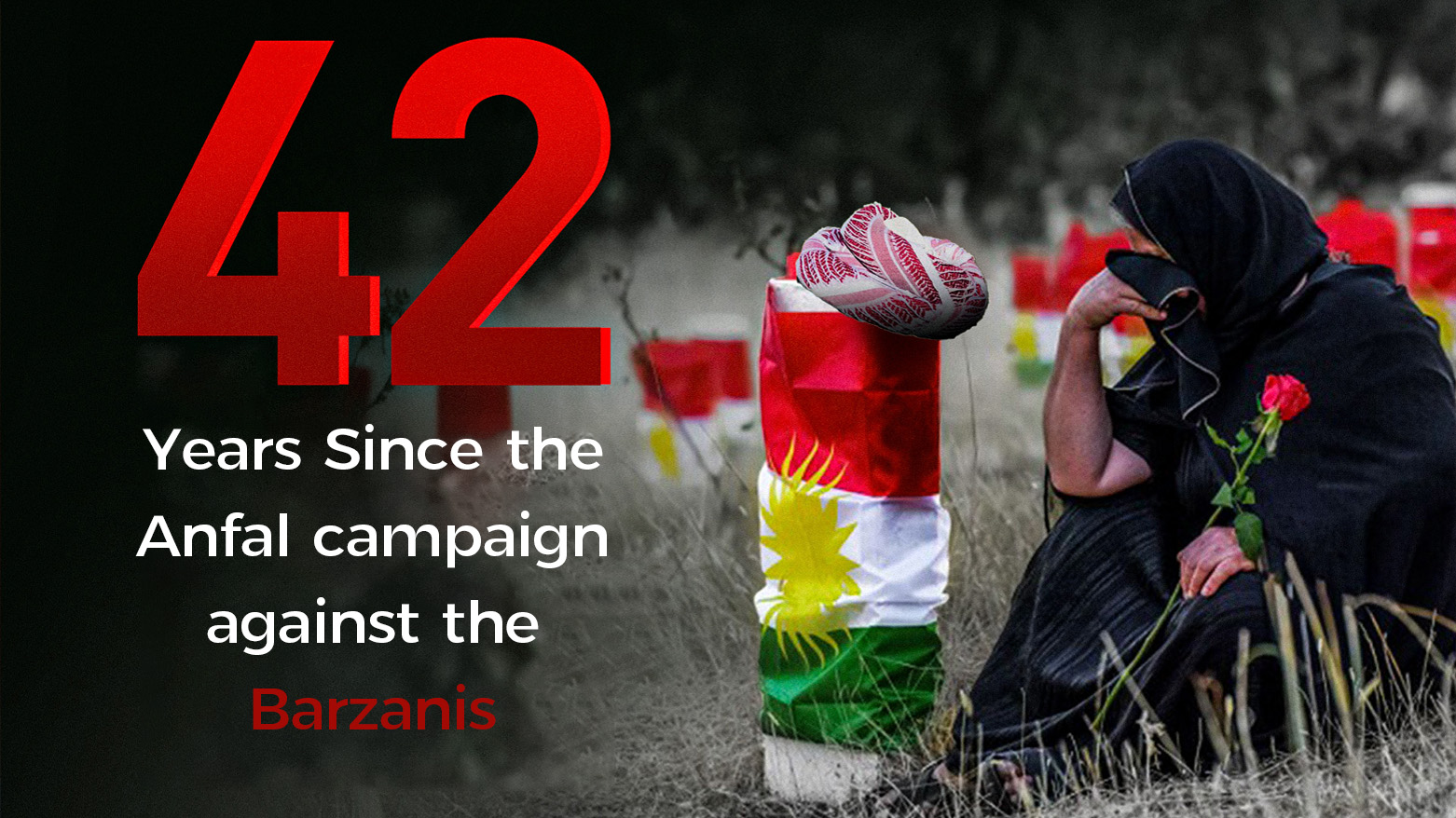42 Years On: Remembering the Anfal Campaign Against the Barzanis
42 years since Anfal's first genocide: 8,000+ Barzani men & boys killed in 1983 Iraqi Ba'athist purge. Forced into camps, then erased—a blueprint for Kurdish persecution.

ERBIL (Kurdistan24) – Today marks the 42nd anniversary of the Anfal genocide against the Barzanis, a tragic chapter that signaled the beginning of a broader genocidal policy against the Kurdish people in the second half of the 20th century under Iraq’s former Ba'ath regime.
The systematic annihilation of the Barzanis was executed in several phases. Initially, many Barzani families were displaced from their homeland and forcibly resettled in tightly controlled military compounds. These relocations—ostensibly for “security” reasons—were in fact preparatory steps for the deadly purge that followed.
Eventually, the Iraqi regime launched its brutal crackdown, which led to the enforced disappearance and execution of more than 8,000 Barzani men and boys. The operation unfolded in stages and became a defining part of what would later be recognized as the genocidal Anfal campaign.
In the 1970s, particularly in 1978, Iraqi authorities began relocating segments of the Barzani population from their native areas to mass detention camps in Diana, Harir, Bahrka, and Goratu. These sites were placed under intense military surveillance, effectively cutting them off from the outside world.
In 1980, further groups were transferred to the infamous camps of Quds and Qadisiya in the Qushtapa area, as part of the regime’s calculated strategy to detain and isolate them before their ultimate removal.
A Secret Operation in Three Stages
According to official Ba'ath-era documents, in late July and early August 1983, elite units from Iraq’s General Security Directorate, backed by Republican Guard forces and rapid-response military units, launched a covert operation to arrest all Barzani males above the age of 15. The arrests took place in three main waves:
- First Phase (July 31, 1983): Barzanis residing in the Quds and Qadisiya camps in Qushtapa were rounded up.
- Second Phase (August 10, 1983): Arrests targeted those in the camps of Harir, Diana, Bahrka, and surrounding areas of Mergasor.
- Third Phase (October 1, 1983): Soldiers combed through the camps house by house, detaining any who had evaded earlier arrests.
One of the clearest confirmations of the operation’s scope comes from an official document marked No. 84, dated March 29, 1989. Sent by the Director of General Security to the Secretariat of the Presidency, the letter reiterated that, on August 1, 1983, based on a directive by then-General Security Director Dr. Fadel Barak, all Barzani males above 15 years old were seized from the Quds and Qadisiya camps and transported in military trucks to Baghdad. None of those taken were seen again.
The Anfal campaign against the Barzanis stands as one of the most grievous crimes committed by the former Iraqi regime against the Kurdish people. The victims were not casualties of war—they were unarmed civilians, systematically targeted due to their ethnic identity and family name.
More than four decades later, the trauma remains deeply embedded in the collective memory of the Kurdish people, serving as a somber reminder of the need for justice, recognition, and historical accountability.
